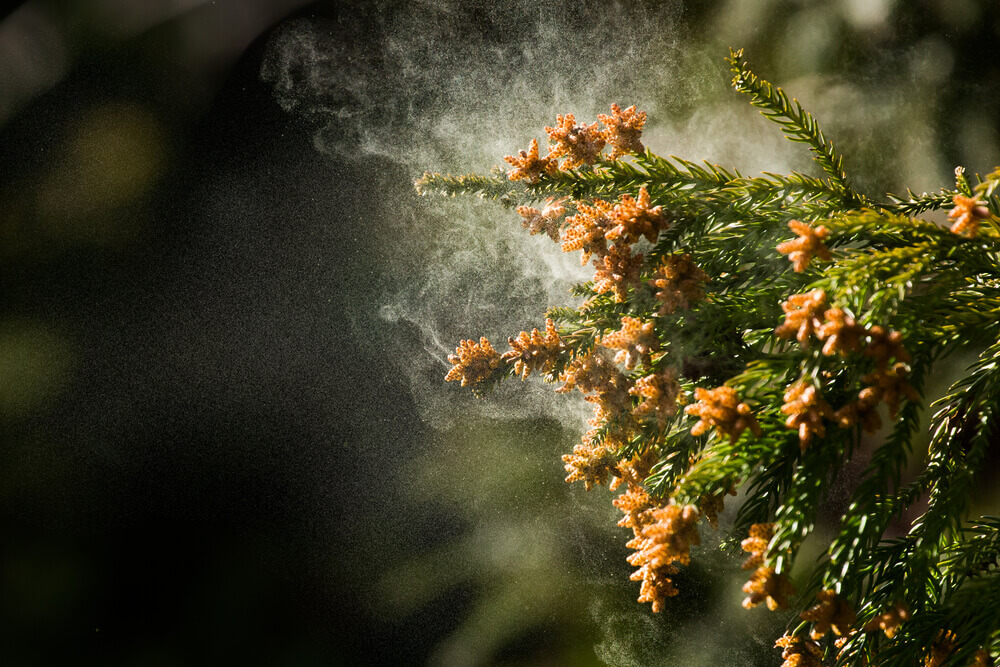by Allergy Partners
May 2, 2024
Cedar Fever in Texas

What is Cedar Fever?
Cedar Fever is an exaggerated immune reaction or allergic reaction to the pollen released from Mountain Cedar Trees (Juniperus ashei), which are highly prevalent in Central Texas. The severity of Cedar Fever symptoms can vary among individuals, and some may require medical treatment or allergy medication to manage their symptoms.
When is Cedar Fever Season in Texas?
While most trees release their pollen in spring, the Mountain Cedar (Juniper) tree releases its cedar pollen during the winter months. Cedar pollen season typically starts in mid to late November, peaks in December and January, and tails off towards the middle or end of February. During these 4 months, cedar pollen is most prevalent as it is released from Mountain Cedar (Juniper) Trees in large quantities across Central Texas. Central Texans may be familiar with the intense pollen circulating Mountain Cedar Trees, which can at times, look like they’re smoking.
How Long Does Cedar Fever Last?
Cedar pollen season coincides with cold and flu season, which can complicate determining if the symptoms are just allergies or an infection. Allergy symptoms typically include a gradual increase in sinus congestion, runny nose, sneezing, and coughing; however, the mucus tends to be clear, and symptoms can sometimes last for many weeks or even months. However, with a viral upper respiratory tract infection, symptoms often start intensely with a sore throat, nasal congestion, and colored mucus; symptoms tend to resolve within 7 to 10 days.
Cedar Fever Symptoms
Due to the high concentration and density of pollen released from Mountain Cedar (also known as Juniper) Trees during the wintertime, patients who suffer from this allergy may experience overwhelming allergy symptoms. Cedar pollen is even known to cause symptoms in people who don’t typically experience seasonal allergies. The symptoms include:
- Sinus congestion
- Runny nose
- Sneezing
- Itchy eyes
- Coughing
- Fatigue
- Low-grade fever
Cedar Fever symptoms can be worse if you have any pre-existing conditions such as asthma, COPD, and or severe diabetes. People with asthma or other respiratory conditions may have worse symptoms, including shortness of breath, wheezing, and chest tightness.
Diagnosing Cedar Fever
Your allergist can diagnose Cedar Fever using allergy tests, such as a skin prick test or a blood test. They may also diagnose Cedar Fever based on your symptoms and medical history, such as the timing of your symptoms and the fact that you don’t have a cold or the flu.
Is Cedar Fever Contagious?
Cedar Fever is not contagious because it is an allergic reaction to cedar pollen, not an illness that can be passed on from person to person. Here are some other reasons why Cedar Fever is not contagious:
- It is caused by an allergy to cedar pollen, not a virus or bacteria.
- It cannot be spread through contact with bodily fluids, such as saliva, mucus, or blood.
- It cannot be spread through contact with contaminated surfaces.
Treatment for Cedar Fever
According to Dr. Michael Saavedra, M.D., of Allergy Partners in Austin, “Those who are allergic to cedar pollen will want to try to limit outdoor activity during the colder months of the year and keep the windows and doors closed at home. Treatment for allergies typically starts with over-the-counter medications, including antihistamines such as Claritin, Zyrtec or Allegra. Nasal sprays such as Flonase, Nasonex, or Astepro can also be helpful if antihistamine tablets alone are not controlling the symptoms well enough.”
“If symptoms cannot be controlled adequately with allergy medications, a visit to the allergist for further evaluation and treatment may be warranted. An allergist can help identify specific allergic triggers, including allergies to pollen, mold, dust mites, and pet dander. Treatment of allergies at the office of an allergist may include education and recommendations to avoid the allergens if possible, prescription allergy medications, and allergen shots to desensitize patients to their specific allergic triggers.”
Cedar Fever causes your immune system to overreact to exposure to cedar pollen. Unlike medications that treat these allergy symptoms, immunotherapy stimulates the immune system to counter this abnormal response. By gradually introducing greater quantities of the allergy, immunotherapy can dampen the allergic response over time and provide lasting relief.
There are multiple methods of immunotherapy, including allergy shots and sublingual immunotherapy.
- Allergy shots (also called subcutaneous immunotherapy, or SCIT) are one of the best treatments available. These allergen vaccines are targeted against your unique allergy triggers.
- Sublingual immunotherapy (SLIT) introduces small doses of allergens under the tongue, which causes a decrease in the body’s production of a specific allergic antibody called IgE. This process teaches your immune system to tolerate exposure to environmental allergens. SLIT is offered in two forms: tablets and drops.
Tips for Reducing Cedar Pollen Exposure
Even though it may not be possible to stay indoors all the time, there are some lifestyle changes you can make to reduce your cedar pollen exposure. For example, avoid going outside when it’s dry and windy, when pollen levels are highest. Other tips include:
- Keep your house and car windows closed to prevent cedar pollen from entering.
- Wash and dry your clothes as soon as you come inside to remove any cedar pollen.
- Bathe your pets more frequently to remove cedar pollen from their fur.
- Clean your home and outdoor surfaces regularly to remove cedar pollen particles.
- Check cedar pollen levels before going outside and avoid outdoor activities when levels are high.
- Wear a dust mask, hat, and sunglasses when you do go outside to protect your mouth, nose, and eyes from cedar pollen.
If you find yourself or a loved one suffering from Cedar Fever symptoms, find the closest Allergy Partners location to schedule a consultation with an allergist near you.
